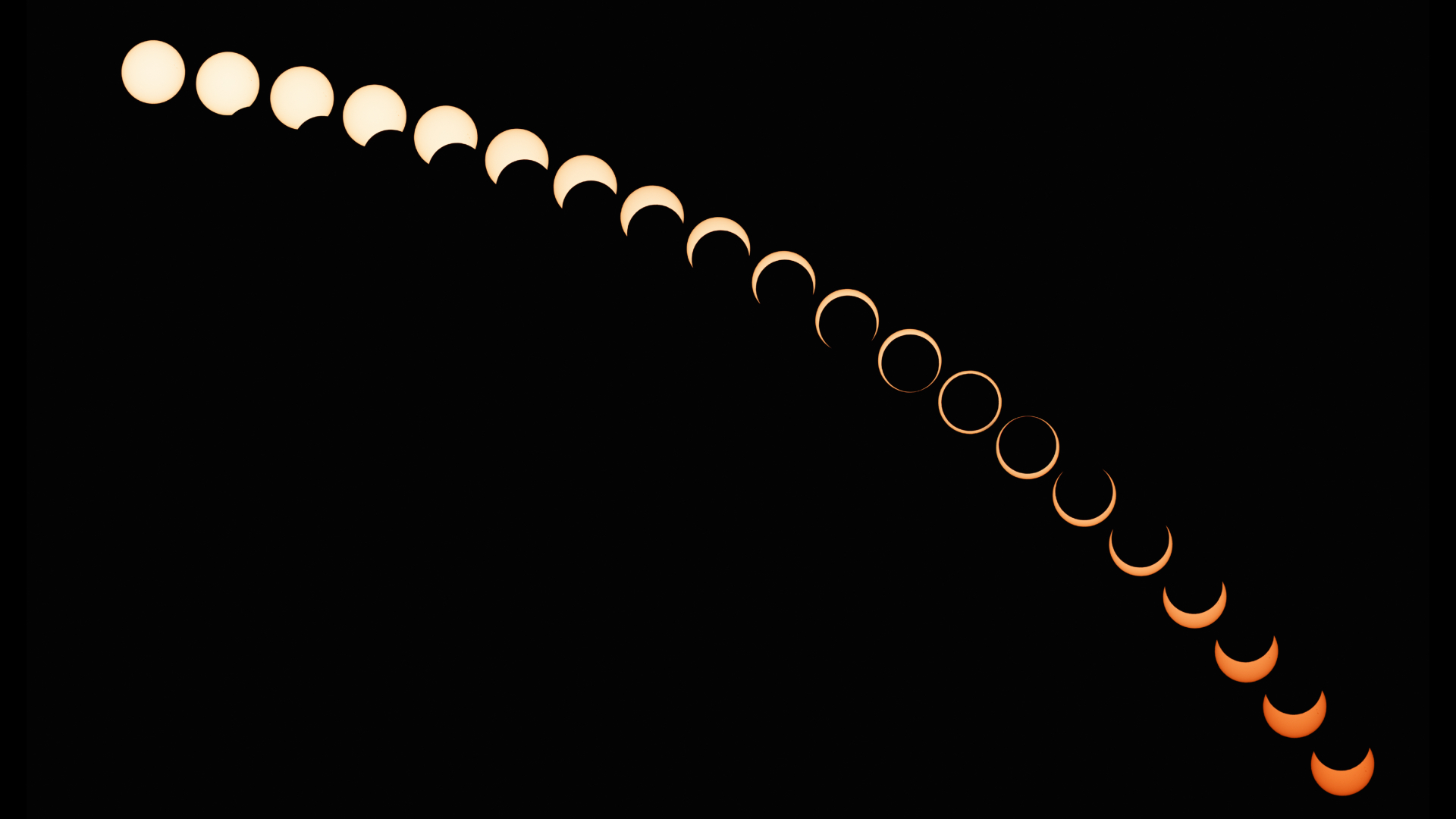
[ad_1]

On Saturday, Oct. 14, an annular solar eclipse will be visible across the Americas.
Spanning 10 countries, including eight U.S. states, the awe-inspiring ‘ring of fire’ spectacle is not to be missed.
We have summarized where and when you can watch the annular solar eclipse 2023 in person and online. NASA has also released an interactive map where you can track the Oct. 14 annular solar eclipse down to the last second.
The eclipse will begin in Oregon before moving down through the U.S. to Texas and then over Mexico, Guatemala, Belize, Honduras, Nicaragua, Costa Rica, Panama, Colombia and Brazil. Eclipse viewers off the coast of Nicaragua in the Gulf of Mexico will experience the maximum duration of the ‘ring of fire’ at about 5 minutes and 17 seconds.
Related: Which U.S. states will October’s annular solar eclipse be visible from?
Observers in northeastern Arizona should note that all Navajo Tribal Parks will be closed from 8:00 a.m. until 1:00 p.m. MDT on October 14, 2023, due to Navajo cultural beliefs surrounding the event. This includes Monument Valley Navajo Tribal Park, Four Corners Monument Navajo Tribal Park and parts of the Tséyi’ Diné Heritage Area in Canyon de Chelly National Monument.
Here are some notable locations and cities that will see a ring of fire, together with the local time and duration of that event, according to French eclipse expert Xavier Jubier. Note that all of these places will also see a long partial solar eclipse before and after the brief “ring of fire”; their closeness to the centerline of the path of annularity determines the duration of the ring of fire:
| Location | Local time of ‘ring of fire’ | Duration of ‘ring of fire’ |
|---|---|---|
| Oregon Dunes, Oregon | 9:15 a.m. PDT | 4 minutes, 29 seconds |
| Crater Lake National Park, Oregon | 9:17 a.m. PDT | 4 minutes, 19 seconds |
| Great Basin National Park, Nevada | 9:24 a.m. PDT | 3 minutes, 46 seconds |
| Bryce Canyon National Park, Utah | 10:27 a.m. MDT | 2 minutes, 31 seconds |
| Canyonlands National Park, Utah | 10:29 a.m. MDT | 2 minutes, 24 seconds |
| Mesa Verde National Park, Colorado | 10:31 a.m. MDT | 2 minutes, 57 seconds |
| Albuquerque, New Mexico | 10:34 a.m. MDT | 4 minutes, 42 seconds |
| Corpus Christi, Texas | 11:55 a.m. CDT | 4 minutes, 52 seconds |
| Edzná Maya archaeological site, Yucatán Peninsula, Mexico | 11:23 a.m. CST | 4 minutes, 32 seconds |
REMEMBER to NEVER look directly at the sun. To view this solar eclipse safely you must use solar filters at all times. Whether your location will experience a partial solar eclipse or an annular solar eclipse, the dangers are the same. Observers will need to wear solar eclipse glasses, and cameras, telescopes and binoculars must have solar filters placed in front of their lenses at all times.
Our how to observe the sun safely guide tells you everything you need to know about safe solar observations.
[ad_2]